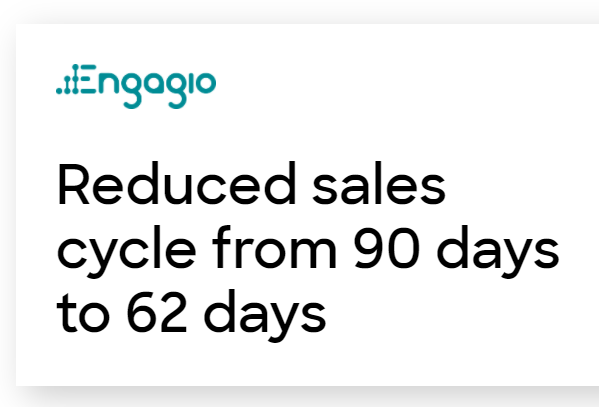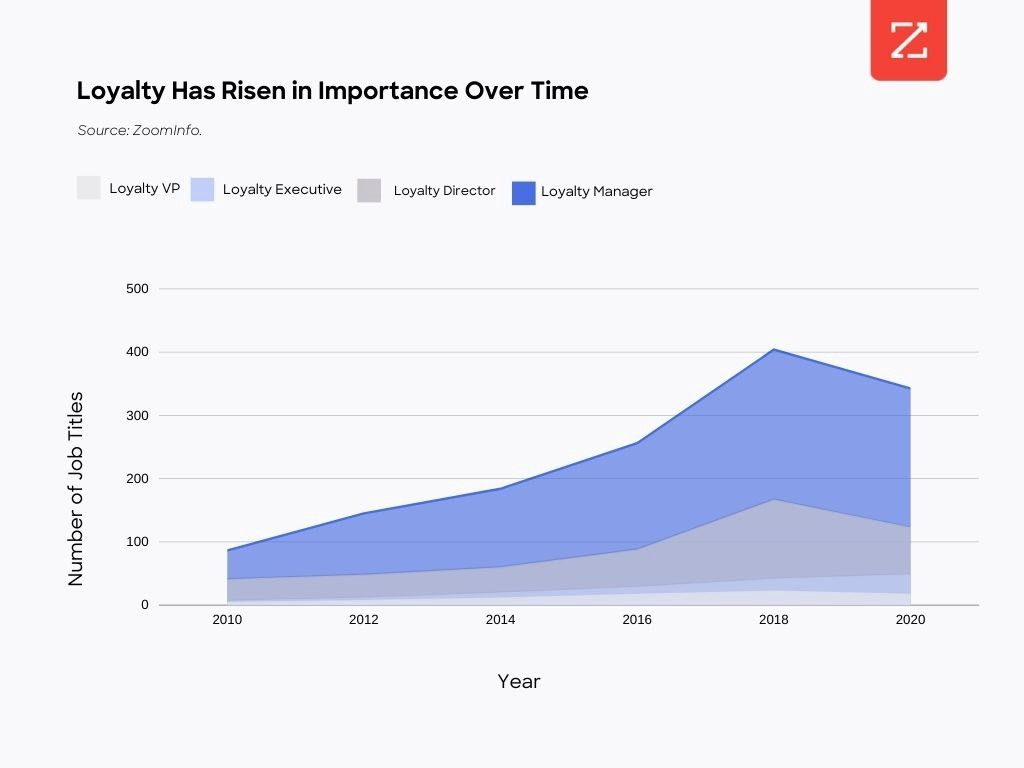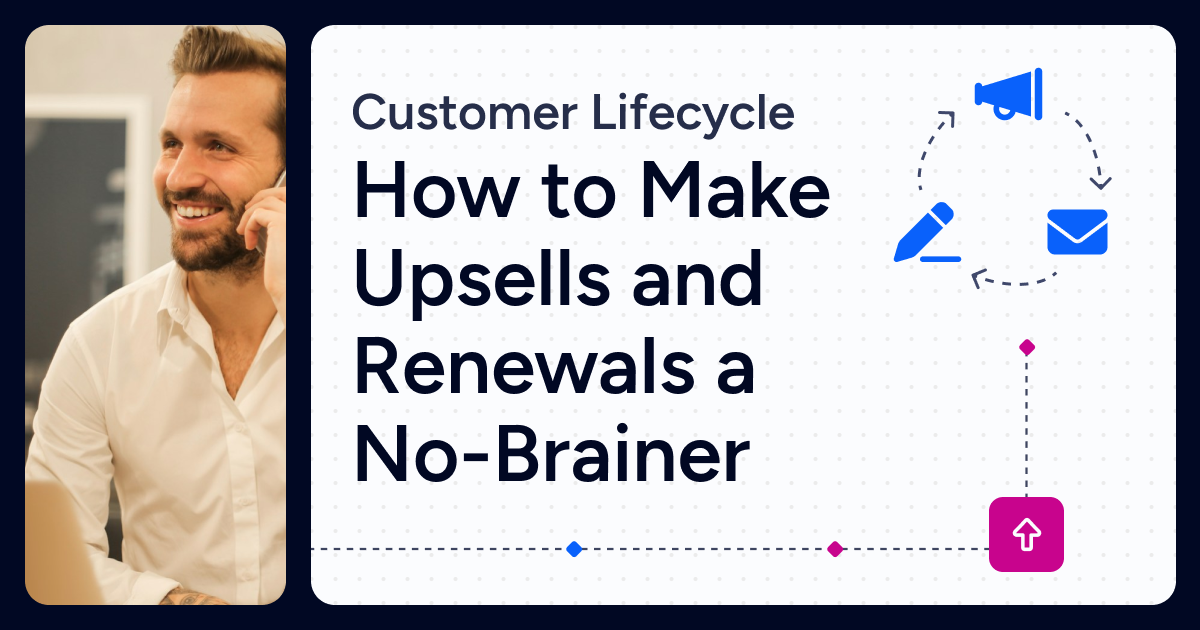Customer lifecycle success hinges on making every customer a priority — from how soon your rep responds to a request to following up quickly after a demo. Does your team have the process down?
What is the Customer Lifecycle (and Why Every Sales Rep Should Care)?
The customer lifecycle is the journey your customer takes with your brand — from their first interaction with your content to renewing their annual subscription or buying additional products.
Here’s the thing, by the time your ideal customer gets to your website or sees your product post on Twitter, they’re self-educating about what they need.
For instance, according to Gartner, B2B buyers spend only 17% of the total purchase journey with sales reps. And 44% of millennials prefer no sales rep interaction at all in a B2B setting.
What does that mean for the sales team that needs to close deals? What about the customer success manager who must ensure a flawless customer buying process?
It requires identifying the customer lifecycle stages and using the steps to guide your customer interactions and long-term customer satisfaction.
What Are the Five Stages of the Customer Lifecycle?
When it comes to describing the customer lifecycle, there are several customer lifecycle models in the ether. The term ‘stages’ implies that the customer lifecycle is a linear process.
Like the buyer’s journey, which is more flywheel than a traditional funnel, the customer might touch each stage multiple times.
Here are five stages that a buyer can be in at any time (plus ACTION tips to make your B2B buyer’s experience phenomenal at every stage).
1. Awareness Stage: Grab (and Keep) the Prospect’s Attention
The first thing the B2B buyer will do after identifying that they need to solve a business problem is to jump online and start researching options.
According to Gartner, the typical buying group for a complex B2B solution involves six to 10 decision makers‚ each armed with four or five pieces of information they’ve gathered independently and must deconflict with the buyer group.
This slows the buying process. It also means buyers are knowledgeable about how your product might fit their business needs. This makes the sales rep’s job easier.
The buying process is a collaboration between marketing and sales and for the long-term.
It’s your responsibility to connect with potential customers — and show them information that will shorten their buying process.
Where will they find your brand? With a solid lead gen strategy in place, your B2B customer will see your posts on their preferred social media channel — like LinkedIn, Twitter, or Instagram.
ACTION TIP: What questions are your ideal customers asking? What pain points are they talking about? Show them THAT content to magnetize awareness.
2. Engagement Stage: Keep Showing Up
Engagement is not a one-time event. It’s about showing up, each time building trust between you and your customer.
It happens at every stage of the customer lifecycle. Create opportunities for customers to engage with you and you with them.
For instance, when they buy their first product from you, make sure they can easily share feedback on their experience (and make sure you ask for it!).
Ask them to follow you on social media. If they sign up for blog updates or your newsletter, drop them into your email sequence and keep the conversation going.
ACTION TIP: Ask customers to give a short video response (versus the standard written review). Get their permission and put the review on your website and on social media to engage new and existing customers.
3. Evaluation Stage: Crush Buyer Objections with Personalized Service
Your customers have buying options, and the competition is chomping at the bit to close the same deal or snap up that renewal. And customers continue to evaluate the market for the best product or service.
In fact, the evaluation phase is one of the more constant stages.
For instance, when a customer lands on your website, they’ll evaluate your brand and what you have to offer within seconds.
If they find what they’re looking for easily, they’ll likely take some sort of action — like sign up for a free trial or call your sales team.
Similarly, if they have a post-purchase issue, their customer service experience can shape how they think of your brand.
Get it right, and they’ll likely recommend your business to others and buy from you again.
ACTION TIP: Send your prospect the demo video while you’re on the phone. Before you hang up, schedule a follow-up call or tell them the date you’ll send a follow-up email. Goodbye, objections.
While you’re at it, check this out: How To Use Sales Dialers To Close Deals Faster
4. Purchase and Support Stage: Create a Killer Customer Experience
Your sales team takes your lead over the line and closes the deal. Now what? In this stage, your new customer must get exceptional support.
As they implement your product, they likely have questions — most likely about integrations, workflows, and account management. Provide personalized support in this phase, and you’ll galvanize the relationship you have with them.
Ultimately, every positive interaction lays a foundation for future upsells and renewals.
ACTION TIP: Think repeat purchase: You have a new customer. What can you do now to ensure they love your product and want to buy from you again? It’s all about the data. See how having access to customer data can improve your sales cycle.

5. Loyalty Stage: Build long-term trust
You close the deal and get your customer set up. Now the real work begins: building a stable, ongoing relationship with them.
Your teams have worked hard to win this deal. However, a customer-experience misstep could jeopardize this new and valuable relationship.
There’s risk in losing future renewals and additional purchases, as well as the customer’s brand loyalty — referrals and word-of-mouth advertising.
Consider this: According to ZoomInfo data, job titles featuring the term ‘customer experience’ have skyrocketed over the last decade compared to titles with ‘loyalty’ or ‘influencer’ in them.”

By linking those steps together, “customers feel like a part of our company,” Schuck adds.
ACTION TIP: Sales rep, customer experience manager, and marketing team: What can you do to make your customer “feel like part of your company”?
Customer lifecycle: Think consistent, phenomenal customer Experience
Your customer lifecycle is more than step-by-step stages. Instead, it’s an ever-changing non-linear process.
And while it’s your job to ensure your customers are satisfied — okay, delighted — your customer ultimately decides how they move through the buying cycle.
It’s up to you to support them at every stage.


